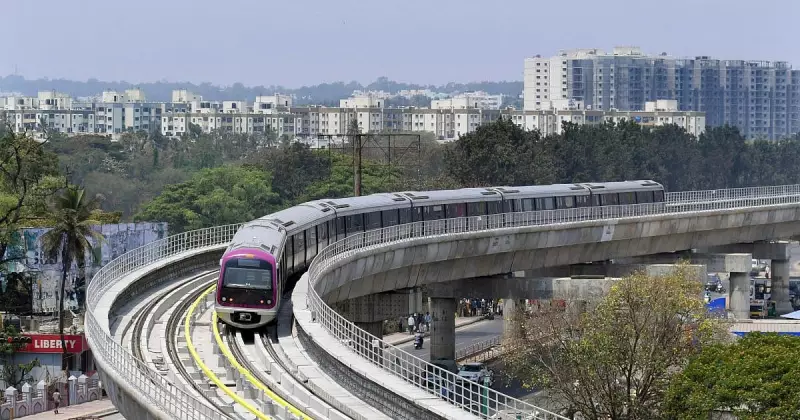
In a significant development for Karnataka's infrastructure landscape, the Bangalore Metro Rail Corporation Limited (BMRCL) has decided to proceed with preparing a Detailed Project Report (DPR) for the proposed Bengaluru-Tumakuru metro corridor. This decision comes despite ongoing debates about the project's feasibility and potential ridership concerns.
Government Directive Spurs Action
The move follows a clear directive from the state government, compelling BMRCL to initiate the DPR preparation process for the ambitious 69-kilometer corridor. BMRCL Managing Director Anjum Parwez confirmed that the corporation has begun the necessary groundwork for creating the comprehensive project report.
This development represents a crucial step forward for the long-discussed connectivity project that aims to link Bengaluru with the rapidly developing city of Tumakuru. The corridor is envisioned to extend from the proposed Madavara depot, which will serve as the originating point for this significant infrastructure undertaking.
Feasibility Concerns and Official Response
Despite the green light for DPR preparation, substantial questions remain about the project's practical viability. Officials within the urban development department have openly expressed skepticism, pointing to potential challenges in achieving sufficient ridership to justify the massive investment.
The concerns highlight the delicate balance between expanding urban infrastructure and ensuring economic sustainability. Critics argue that the distance between the two cities might not generate the daily commuter traffic typically required for metro rail viability, while proponents emphasize the long-term development benefits and decongestion effects.
Project Scope and Strategic Importance
The Bengaluru-Tumakuru metro corridor represents one of the most extensive proposed metro extensions in the region. Spanning approximately 69 kilometers, the project would significantly enhance connectivity between Bengaluru and one of its important neighboring urban centers.
Tumakuru's status as a growing industrial and educational hub adds strategic importance to the proposed connectivity. The metro link could potentially transform the relationship between the two cities, enabling greater economic integration and providing Tumakuru residents improved access to Bengaluru's employment opportunities and infrastructure facilities.
The decision to proceed with DPR preparation indicates the government's commitment to exploring all aspects of the project thoroughly. The detailed report will likely address critical factors including projected ridership patterns, environmental impact assessments, technical specifications, financial requirements, and implementation timelines.
Next Steps and Implementation Timeline
With the directive now officially in motion, BMRCL will embark on the comprehensive process of DPR creation. This involves detailed technical studies, feasibility analyses, cost projections, and route optimization exercises. The completed DPR will serve as the foundational document for securing necessary approvals and funding allocations.
The preparation of the Detailed Project Report marks a pivotal phase in the project's lifecycle. Once completed, the DPR will undergo rigorous scrutiny by various government bodies and technical committees before any final decision regarding actual implementation is made.
This cautious yet progressive approach demonstrates the administration's attempt to balance ambitious infrastructure development with fiscal responsibility and practical considerations. The coming months will reveal whether the Bengaluru-Tumakuru metro corridor can overcome its feasibility challenges to become a transformative transportation solution for the region.





